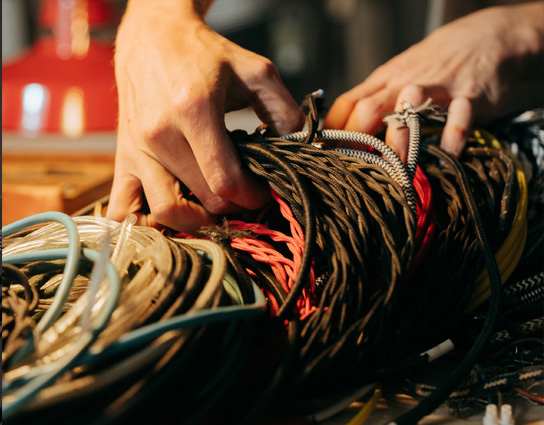The electrical cable industry has recently seen significant developments and innovations, with new materials and technologies introduced to improve cables’ efficiency, reliability, and sustainability. Here are some of the latest updates in the electrical cable industry around the world:
High-voltage direct current (HVDC) cables transmit electricity long distances, from offshore wind farms to shore or between countries. HVDC cables have several advantages over traditional alternating current (AC) cables, including lower transmission losses, transmitting power through solid barriers (such as mountains), and connecting asynchronous power systems. Recently, several projects have been using HVDC cables, including the DolWin5 offshore wind farm in the North Sea, which uses HVDC cables to transmit electricity from the wind turbines to shore.
Flexible cables:
In the past, lines were made from rigid materials, which made them inflexible and difficult to install in tight spaces or around corners. However, recent developments in flexible cables have made them more practical and easier to install. These cables are made from materials such as silicone or polyurethane, which allow them to be bent and twisted without damaging the conductor. Flexible cables are used in various applications, including robotics, automation, and renewable energy systems.
Sustainable cables:
The electrical cable industry has also shifted towards more sustainable materials and production methods. For example, many threads are now made from recycled materials, such as copper or aluminum. Additionally, some cables are made from biodegradable materials, such as soy-based plastics or hemp, which natural processes can break down after reaching the end of their useful life. These sustainable cables are not only better for the environment, but they can also reduce costs for manufacturers and end users.
Smart cables:
With the increasing adoption of the Internet of Things (IoT) and innovative technologies, there is a growing demand for lines capable of transmitting data and electricity. These intelligent cables can monitor and control devices like sensors or motors in real time. Bright wires are used in various applications, including building automation, transportation, and renewable energy systems.
High-temperature cables:
As the electricity demand continues to grow, wires are increasingly needed in extreme environments, such as high-temperature areas. High-temperature cables are made from materials that can withstand temperatures up to 250°C (482°F) and are used in applications such as oil and gas exploration, power generation, and aerospace.
Conclusion
Overall, the electrical cable industry is constantly evolving, with new materials and technologies being developed to improve the performance and sustainability of cables. These advances are helping to meet the growing electricity demand and enable the transition to a more connected and sustainable world.

